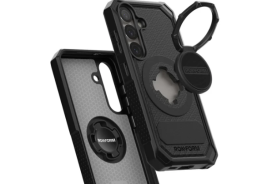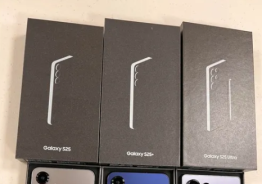HTC just unveiled its new flagship smartphone, the HTC One, and the handset seems to have what it takes to make it.
As promising as it may seem, however, the HTC One joins a highly competitive market, and it has to face notable rivals. How does the new HTC flagship stack up against its competition?
First of all, the greatest thing the HTC One has to boast is its display. It sports a 4.7-inch 1080p screen with a whopping pixel density of 468 pixels per inch (ppi), which is the highest resolution ever seen on a smartphone.
While the HTC One is not the first 1080p smartphone, other 1080p handsets are larger. The Sony Xperia Z, for instance, boasts a 5-inch display. Similar-sized displays, meanwhile, are all 720p. The 4.8-inch Samsung Galaxy S3 packs a pixel density of 306 ppi, while the 4.7-inch Nexus 4 has a pixel density of 318 ppi.
In terms of size, the HTC One is similar to most of its competition: It's quite a big phone, like most Android handsets these days. At 5.4 inches tall, 2.68 inches wide and .36-inch thick, the HTC One is slightly bigger and taller than the Galaxy S3, and taller than the Nexus 4. The iPhone 5, meanwhile, is smaller: 4.87 inches tall, 2.31 inches wide, and .30-inch thick — and it still offers a relatively high resolution with Apple's highly touted Retina display, but it's got nothing on the HTC One's screen.
When it comes to processing power, the HTC One is as powerful as any high-end smartphone currently available on the market. It packs a quad-core Snapdragon 600 processor that's an upgrade from the Snapdragon S4 powering the Samsung Galaxy S3 or the relatively new Snapdragon S4 Pro found on the LG-made Google Nexus 4 and the Sony Xperia Z. The HTC One is also clocked a bit faster than its competition, but that's not paramount for smartphones.
Other specs and features of the HTC One include 2GB of RAM, 32GB or 64GB of internal storage, and all the standard features for a high-end smartphone such as LTE, Bluetooth 4.0 and more. The One also packs an IR Blaster that can serve as a TV remote.
On the other hand, while HTC takes great pride in the One's camera, it may not be the handset's strongest point. The Samsung Galaxy S3, Google Nexus 4 and the iPhone 5 all sport 8-megapixel cameras, and the Sony Xperia Z boasts a 13.1-megapixel shooter, while the HTC One packs only 4 megapixels that the company calls "ultrapixels." Others may be betting on normal camera specs, but HTC is actually relying on software to maximize its "ultrapixels."
Bottom line, the HTC One looks pretty good on paper, but it still has to prove its worth in terms of battery, software and hardware. The smartphone is launching worldwide soon, and will be available on Sprint, AT&T and T-Mobile in the U.S.
© Copyright 2025 Mobile & Apps, All rights reserved. Do not reproduce without permission.












